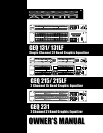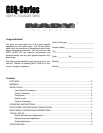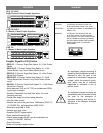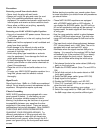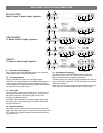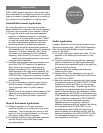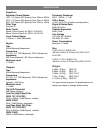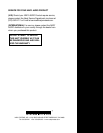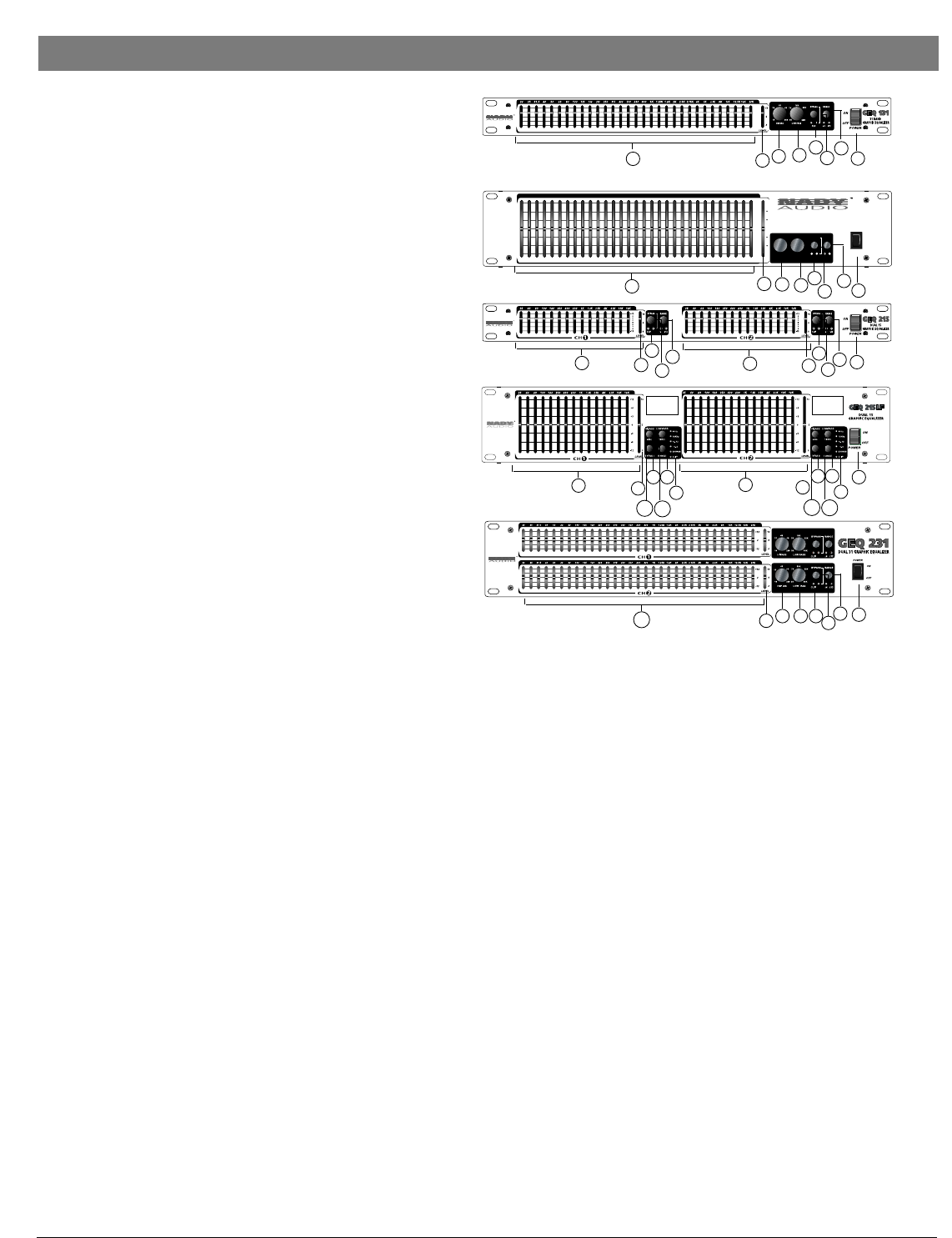
1. Power Switch
To turn the equalizer ON or OFF, press the upper or lower
portion of this button.
CAUTION: Always turn on your equalizer BEFORE your
power amplifiers are turned on, and always turn off your
equalizer AFTER your power amplifiers have been turned
off.
2. Input Level Control
This controls the level of signal to the equalizer. It is capable
of +/- 6dB of gain.
This control is used to adjust for variation in input level to the
equalizer channel, or to compensate for the equalization
applied to the input signal. Turn this control down if the CLIP
LED illuminates steady (meaning too strong an input signal).
Unity gain can be set by turning this knob to its center detent
position.
3. Low-Cut/High-Pass Filter (GEQ 131/131LF/231)
These equalizers are equipped with a 10Hz, 12dB/octave,
variable Low Cut/High-Pass Filter (HPF) to cut down unwanted
low frequency signal. Because of its high roll-off slope, the HPF
can be efficiently used to attenuate the "HUM" noise from preced-
ing instruments, or to prevent the low frequency resonance that
can occur when speakers are installed in an enclosed acoustic
environment.
3A. High-pass Filter Switch and Indicator (GEQ 215/215LF)
40 Hz, 12dB/octave HPF. LED lights when activated.
4. Filter Range Switch & Indicators
The gain range of the filter sliders is switchable (as a group) from
+/-6dB to +/-12dB for maximum boost/cut capability. At 6dB the
green LED will illuminate and at 12 dB the red LED will illuminate.
5. In/Out Bypass Switch & Indicator
This switch inserts or removes the equalizer channel from the
signal path. The red LED lights when the switch is depressed to
indicate that the unit or channel is in the equalizing mode. In the
bypass mode, the signal is routed from the input directly to the
output. The bypass function is FET switched to prevent switching
transients when inserting the equalizer into the circuit path. Use
this switch to compare equalized and unequalized material. When
there is no power to the unit, the equalizer automatically reverts
to bypass.
6. Peak/Clip Indicator
This red LED illuminates if any section of the equalizer is within
5dB of clipping. Occasional blinking of this LED is acceptable,
but if it remains on more than intermittently you should turn down
either the equalizer’s level controls or reduce the output level of
the preceding component to avoid audible distortion.
7. Filter Level Slider Controls
Each one of these linear potentiometers will boost or cut its noted
frequency by either +/-6dB or +/-12dB depending on the filter
range selected. When all of the sliders are in center detented
position, the output of the equalizer is flat. Each slider is marked
with the center frequency of its band pass filter.
8. Low-Pass/High-Cut Filter (GEQ 131/131LF/231)
This filter rolls off higher frequencies. This is useful for reducing
hiss or sibilance from a signal. Its range is adjustable from 3KHz
to 50KHz.from 3KHz to 50KHz.
8A. Low-Pass Filter Switch and Indicator (GEQ 215/215LF)
16KHz, 12 dB/octave LPF. LED lights when activated.
FRONT PANEL CONTROLS AND CONNECTIONS
GEQ 131/131LF
Single Channel 31 Band Graphic Equalizers
GEQ 215/215LF
2 Channel 15 Band Graphic Equalizers
GEQ 231
2 Channel 31 Band Graphic Equalizer
7
2
3
8
6
5
1
4
6
POWER
10
+12
+6
-6
+3
-3
0
-12
0
LEVEL
5
31 BAND GRAPHIC EQUALIZER
GEQ 131LFGEQ 131LF
OFF
ON
BYPASS
CLIP –6 –12
RANGE
40
60
15
25010
HI PASS
15K
22K7K
3K 50K
LOW PASS
20 31.5 50 100 200 500 1.25K 2.5K 6.3K 12.5K25 40 80 160 400 1K 2K 5K 10K63 125 315 800250 630 1.6K 4K3.15K 8K 16K 20K
7
7
7
2
6
5
4
2
3
8
6
5
4
1
3A
8A
7
2
5
6
4
1
7
2
5
4
6
7
2
5
4
6
3A
8A
1
3
8
4
6
5
2
1



